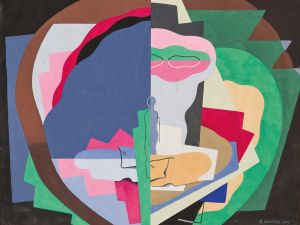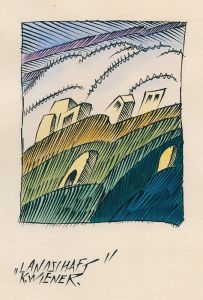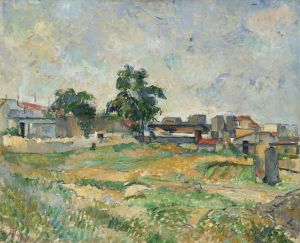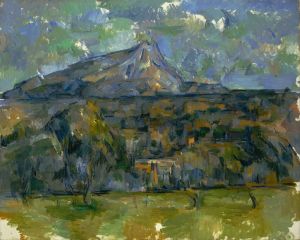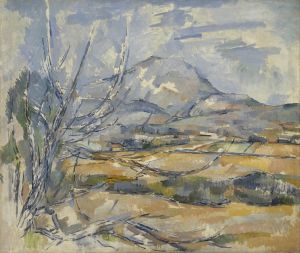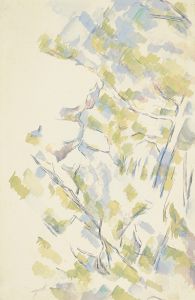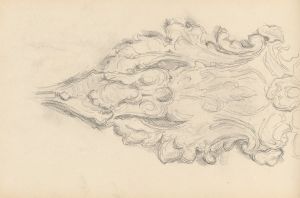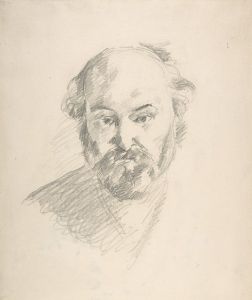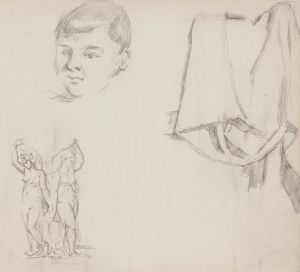
Mont Sainte-Victoire and Château Noir
A hand-painted replica of Paul Cézanne’s masterpiece Mont Sainte-Victoire and Château Noir, meticulously crafted by professional artists to capture the true essence of the original. Each piece is created with museum-quality canvas and rare mineral pigments, carefully painted by experienced artists with delicate brushstrokes and rich, layered colors to perfectly recreate the texture of the original artwork. Unlike machine-printed reproductions, this hand-painted version brings the painting to life, infused with the artist’s emotions and skill in every stroke. Whether for personal collection or home decoration, it instantly elevates the artistic atmosphere of any space.
Paul Cézanne's "Mont Sainte-Victoire and Château Noir" is a celebrated painting that exemplifies the artist's innovative approach to landscape painting and his profound influence on the development of modern art. Cézanne, a French Post-Impressionist painter, is renowned for his unique method of building form with color and his analytical approach to nature, which laid the groundwork for the transition from 19th-century artistic concepts to a radically different world of art in the 20th century.
The painting depicts Mont Sainte-Victoire, a mountain in southern France that Cézanne painted numerous times throughout his career. This particular mountain held a personal significance for Cézanne, as it was located near his hometown of Aix-en-Provence. The mountain became a recurring subject in his work, allowing him to explore the changing effects of light and atmosphere on the landscape. In "Mont Sainte-Victoire and Château Noir," Cézanne captures the mountain with a sense of solidity and permanence, using a palette of muted greens, blues, and earth tones.
Château Noir, a dark, foreboding structure, is situated in the foreground of the painting. This building was an old, dilapidated manor house that Cézanne often used as a motif in his work. The juxtaposition of the solid, geometric forms of the château with the natural, organic shapes of the mountain and surrounding landscape highlights Cézanne's interest in the interplay between man-made structures and the natural world. The painting is characterized by Cézanne's distinctive brushwork, which consists of small, repetitive strokes that build up the surface of the canvas, creating a sense of depth and texture.
Cézanne's approach to composition in "Mont Sainte-Victoire and Château Noir" reflects his desire to capture the underlying structure of the natural world. He often used a methodical approach to depict the landscape, breaking it down into basic geometric shapes and planes. This analytical method allowed him to convey a sense of order and stability, even in the seemingly chaotic forms of nature. The painting is a testament to Cézanne's belief that all forms in nature can be reduced to the cylinder, sphere, and cone, a concept that would later influence artists such as Pablo Picasso and Georges Braque in the development of Cubism.
The painting is also notable for its exploration of color and light. Cézanne was interested in how color could be used to model form and create a sense of spatial depth. In "Mont Sainte-Victoire and Château Noir," he employs a limited palette to convey the subtle variations in light and shadow across the landscape. The use of color to define form, rather than relying on traditional techniques of linear perspective, was a revolutionary approach that challenged conventional artistic norms.
"Mont Sainte-Victoire and Château Noir" is a significant work in Cézanne's oeuvre, demonstrating his mastery of landscape painting and his innovative approach to form and color. The painting is housed in the collection of the Courtauld Gallery in London, where it continues to be admired for its contribution to the evolution of modern art. Cézanne's work, including this painting, has had a lasting impact on generations of artists, solidifying his reputation as a pivotal figure in the history of art.






